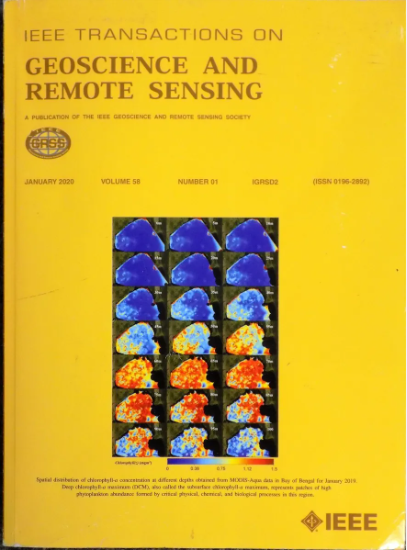RTO-LLI:采用快速多级匹配和三次优化的鲁棒实时图像定向方法,用于低重叠大型无人机图像
IF 7.5
1区 地球科学
Q1 ENGINEERING, ELECTRICAL & ELECTRONIC
IEEE Transactions on Geoscience and Remote Sensing
Pub Date : 2025-04-11
DOI:10.1109/TGRS.2025.3559983
引用次数: 0
摘要
无人机实时摄影测量是推动摄影测量四维产品快速生成、智能信息提取和快速遥感成图、高效大尺度三维建模的重要手段。然而,对于低重叠大画幅图像序列的实时处理,仍然存在两个挑战:1)大画幅图像的数据量和计算量较大,对常规性能计算单元的实时在线处理提出了挑战,需要更高效的算法;2)低重叠图像使得匹配对应难以实时覆盖整个重叠区域,对实时性和鲁棒性相对定位提出了重大挑战。为此,本文提出了一种低重叠大画幅无人机图像(RTO-LLI)的鲁棒实时定位方法,能够对这类数据进行实时鲁棒处理。首先,设计了一种用于低重叠大幅面图像实时处理的鲁棒初始化方法,以保证同步定位与制图(SLAM)初始化的高成功率;其次,等速假设跟踪可以在等速飞行中实现快速定向。第三,当第二步为假时,采用基于多级匹配和粗精优化的实时姿态估计方法,鲁棒求解精确图像姿态。最后(第三级)位姿优化方法基于迭代加权最小二乘(IRLS)算法,选取合适的搜索区域,实时计算出更高精度的图像位姿。最后,基于低重叠图像并行处理的实时映射可以生成高精度的三维点图,并实时完成下一帧的特征提取。在几种不同类型场景下进行的实验表明:1)RTO-LLI的处理速度显著优于传统的离线方法:PhotoScan、OpenMVG和Colmap。RTO-LLI能够以1.5帧/秒的速度处理大画幅无人机图像序列(单幅图像2000万像素),满足无人机实时摄影测量任务的需求;2) RTO-LLI方法在4种不同场景的50次重复实验中,是唯一成功完成实时任务的方法,鲁棒性远远优于其他经典SLAM方案;3) RTO-LLI估计姿态的位移误差小于轨迹长度的1/2000,平均重投影误差小于1.5像素,几乎与传统的离线方法相同。RTO-LLI方法满足低重叠大画幅无人机图像实时摄影测量的效率、鲁棒性和精度要求。本文章由计算机程序翻译,如有差异,请以英文原文为准。
RTO-LLI: Robust Real-Time Image Orientation Method With Rapid Multilevel Matching and Third-Times Optimizations for Low-Overlap Large-Format UAV Images
Unmanned aerial vehicle (UAV) real-time photogrammetry is important to promote the rapid generation of photogrammetry 4-D product, intelligent information extraction and rapid remote sensing mapping, and efficient large-scale 3-D modeling. However, for real-time processing of low-overlap large-format image sequence, there remain two challenges: 1) large-format images result in greater data volume and computational load, posing challenges for real-time online processing on regular-performance computing units, requiring more efficient algorithms and 2) low-overlap images make it difficult for matching correspondences to cover the entire overlapping area at real time, leading to significant challenges for real-time and robust relative orientation. Therefore, this article proposes a robust real-time orientation method for low-overlap large-format UAV image (RTO-LLI), which can robustly handle this kind of data in real time. First, a robust initialization method for real-time processing of low-overlap large-format images was designed to ensure a high success rate of simultaneous localization and mapping (SLAM) initialization. Second, constant velocity hypothesis tracking enables fast orientation during constant-speed flight. Third, when the second step is false, use a real-time pose estimation method based on multilevel matching and coarse-to-fine optimization to robustly solve the precision image pose. Fourth, the final (third-level) pose optimization method is based on the iteratively reweighted least squares (IRLS) algorithm with a suitable search area, which can compute higher precision image pose in real time. Finally, real-time mapping based on parallel processing for low-overlap images can generate high-precision 3-D point maps and complete feature extraction for the next frame in real time. Experiments conducted on several different types of scenes show that: 1) the processing speed of RTO-LLI significantly surpasses traditional offline methods: PhotoScan, OpenMVG, and Colmap. RTO-LLI can handle large-format UAV image sequence (single imagery has 20 million pixels) at a speed of 1.5 frames/s, meeting the demands of real-time UAV photogrammetry tasks; 2) RTO-LLI is the only method that has successfully completed real-time tasks in all 50-time repeated experiments for four different types of scenes, demonstrating robustness far superior to other classical SLAM solutions; and 3) the displacement error of the estimated pose by RTO-LLI is less than 1/2000 of the trajectory length, and the average reprojection error is less than 1.5 pixels, almost as well as traditional offline methods. The RTO-LLI method meets the efficiency, robustness, and accuracy requirements of real-time photogrammetry for low-overlap large-format UAV images.
求助全文
通过发布文献求助,成功后即可免费获取论文全文。
去求助
来源期刊

IEEE Transactions on Geoscience and Remote Sensing
工程技术-地球化学与地球物理
CiteScore
11.50
自引率
28.00%
发文量
1912
审稿时长
4.0 months
期刊介绍:
IEEE Transactions on Geoscience and Remote Sensing (TGRS) is a monthly publication that focuses on the theory, concepts, and techniques of science and engineering as applied to sensing the land, oceans, atmosphere, and space; and the processing, interpretation, and dissemination of this information.
 求助内容:
求助内容: 应助结果提醒方式:
应助结果提醒方式:


